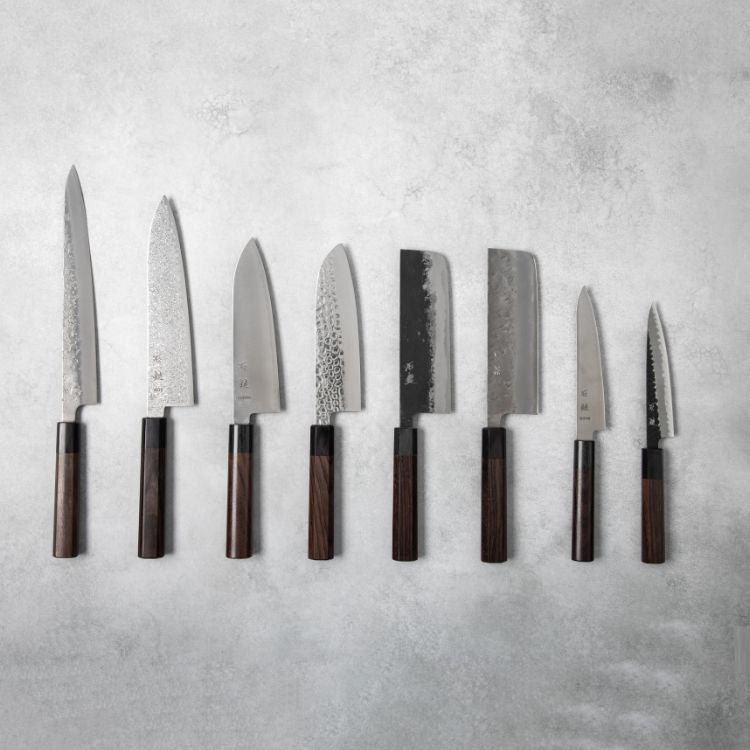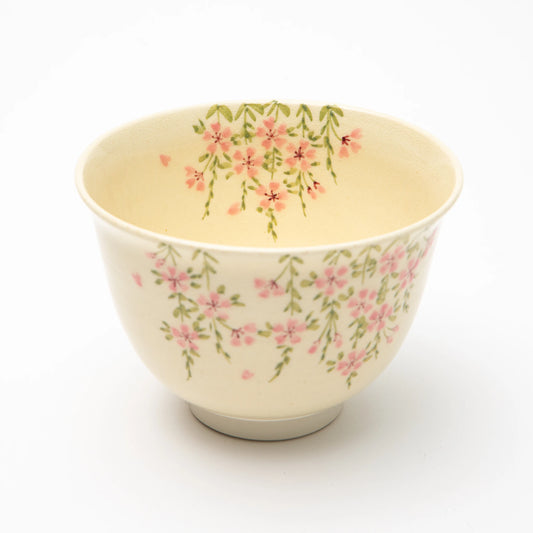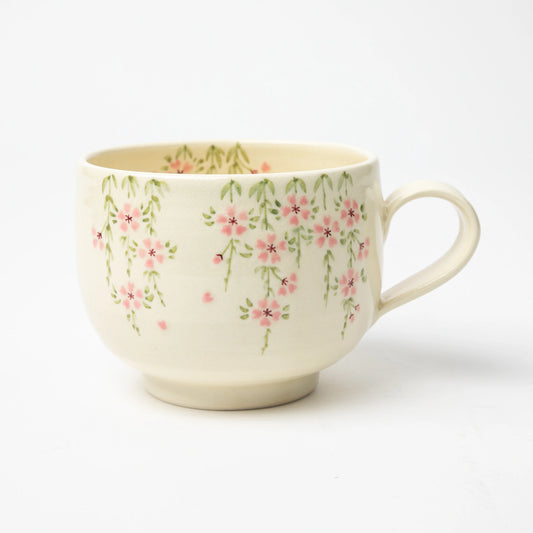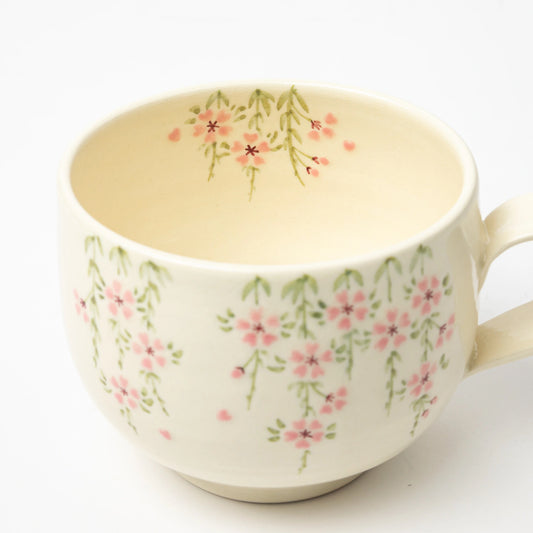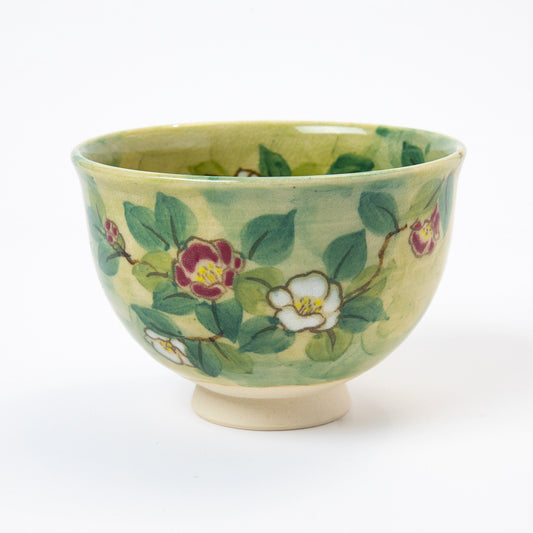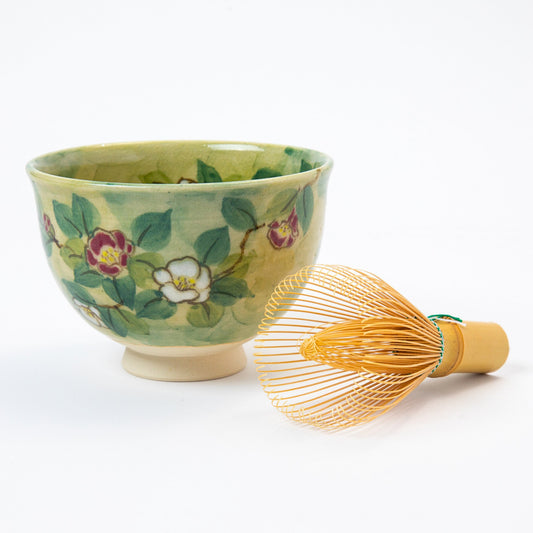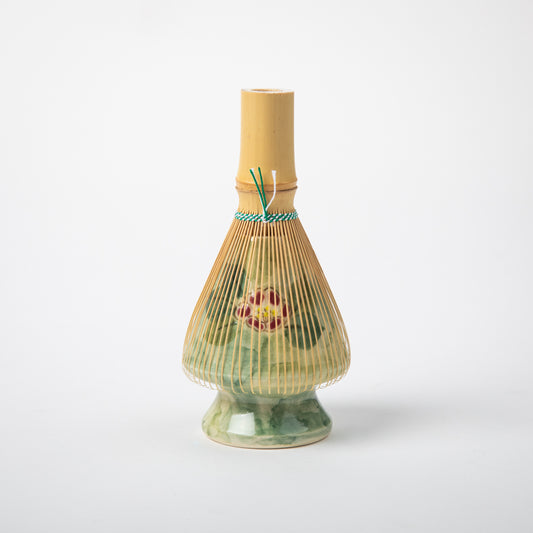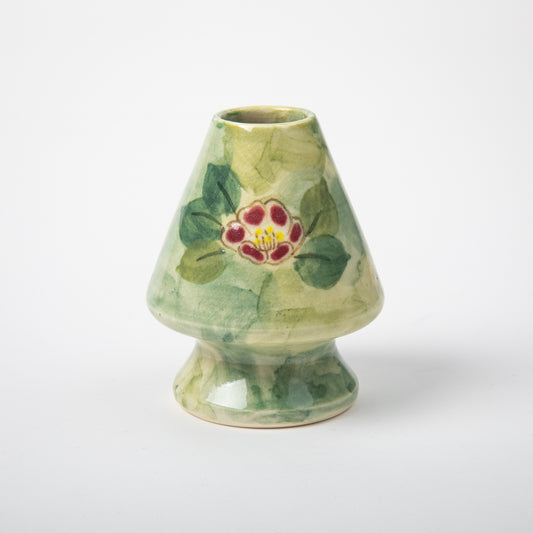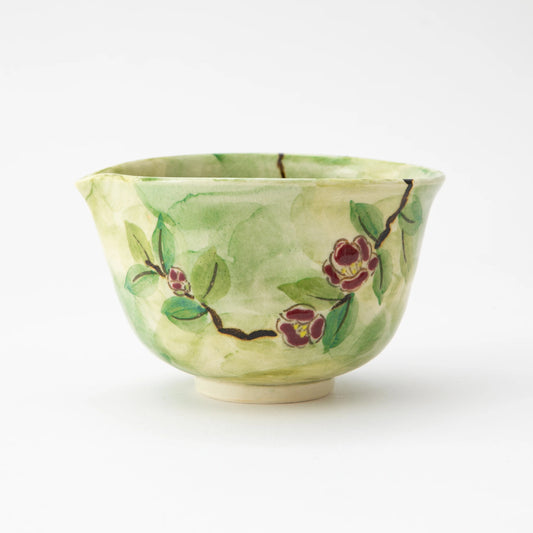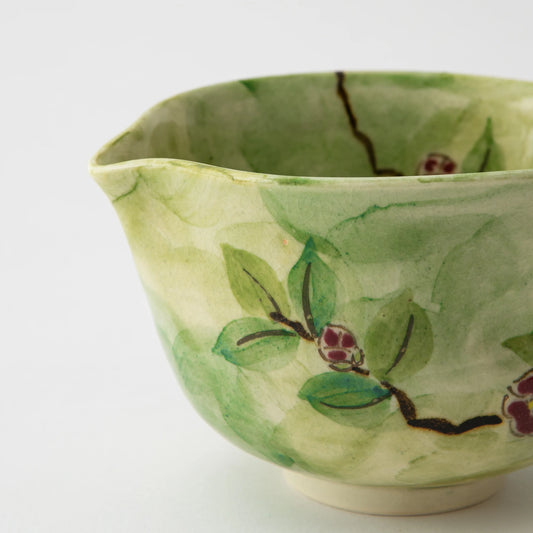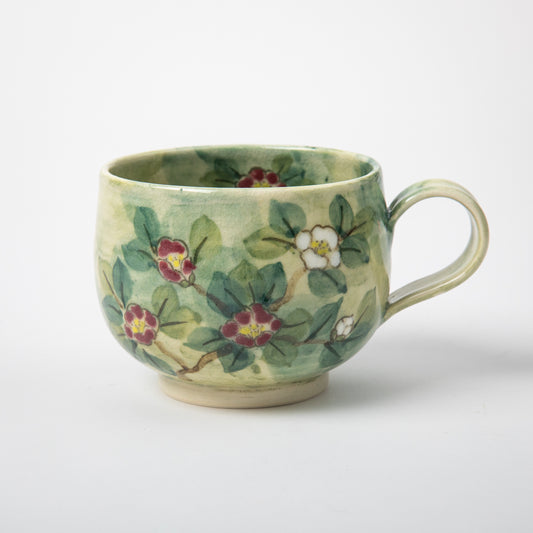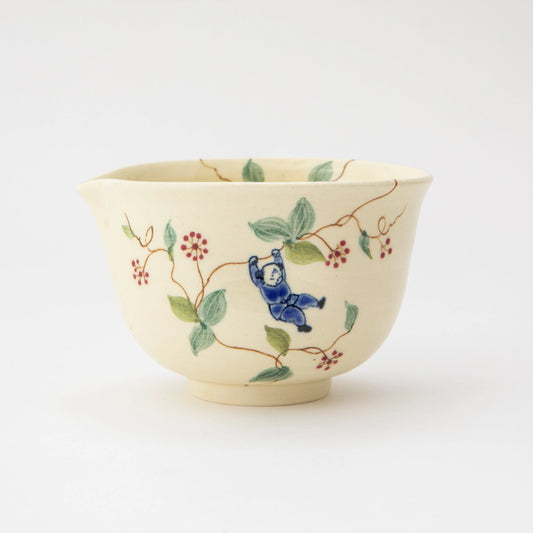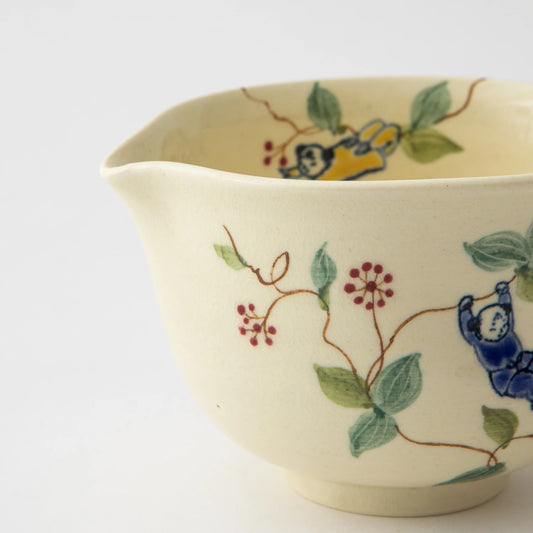Ceramics have long held a meaningful place in Japan’s cultural history. As the former capital and a cradle of tradition, Kyoto has played a vital role in preserving and nurturing the country’s rich ceramic heritage. With its rich tradition of craftsmanship and generations of skilled artisans, the city continues to nurture and celebrate the timeless art of Kyo ware. Among the names that have kept this tradition alive, Tosen Kiln stands out as a beacon of enduring artistry and dedication to Kiyomizu ware.
Known in Japanese as Tosengama (陶泉窯), Tosen Kiln is a distinguished producer and wholesaler of Kiyomizu ware, with roots tracing back to the early Meiji period. Originally founded under the name Tosen, the company has long been a part of Kyoto’s storied ceramics heritage. On October 19, 1938, it was formally incorporated as Nitto Sangyo Co., Ltd., and in June 1944, it opened its workshop in Kyoto’s historic Muromachi district. It was here that the company began producing Kiyomizu ware under the name Tosen. In December 2010, it embraced its current name, Tosen Kiln Co., Ltd., a name that proudly carries forward its legacy into the present day.
History of Kyo Ware, Kiyomizu ware, and the Overglaze Painting Technique
Kyo ware, or Kyo-yaki (京焼) in Japanese, is a type of traditional Japanese pottery from Kyoto that dates back to around the 5th century. However, the term Kyo ware more specifically refers to the pottery produced in Kyoto from about 400 years ago, when many ceramic kilns were built in the foothills of the Higashiyama mountains.
The flourishing of Kyo ware is often credited to Nonomura Ninsei, a celebrated Japanese potter active during the 17th century. Ninsei established a highly influential style known for its elegant, colorful overglaze painted ceramics. He opened his kiln, the Omuro kiln, near Ninna-ji Temple in Kyoto, which is located northwest of the Kiyomizu area.
The overglaze painting technique is a method of decorating pottery in which designs are applied over an already fired and glazed surface. This approach allows artists to create intricate, detailed artwork using a much broader and more vivid color palette than is possible with underglaze decoration. Because the pigments are fired at a lower temperature, the technique offers greater flexibility and forgiveness, because artists are not limited by the chemical reactions that occur at high kiln temperatures.
Ninsei’s refined style of overglaze painting was later adopted by many potters working near Kiyomizu-dera Temple. This led to the flourishing of the Kyoto pottery tradition. Over time, many kilns in the Higashiyama foothills began to produce ceramics in a similar style.
As a result, Kiyomizu ware, or Kiyomizu-yaki (清水焼), which originally referred to pottery made specifically around the Kiyomizu area, came to be seen as representative of Kyo ware as a whole. Today, Kiyomizu ware is recognized as one of the most iconic styles and is often used as an umbrella term that refers to Kyo ware, but Kyo ware encompasses a broader range of pottery traditions from across the Kyoto region.
Tosen Kiln and Appreciation for the Underglaze Painting Techniques
We have discussed and learned a lot about the overglazed painting techniques that popularized the Kyo ware. Creating an appreciation of the history of pottery in Kyoto and to help learn about its counterpart, the underglazed painting technique.
The underglaze painting technique is a method of pottery decoration where designs are painted directly onto the unfired or bisque-fired clay body, before a glaze is applied. Since the unglazed surface is highly absorbent, this technique requires a different set of skills compared to overglaze painting. The result is a highly durable and permanent design, sealed beneath the glaze during the final firing.
 Although Tosen kiln also uses overglaze painting techniques, particularly to add gold accents to some pieces, their work is distinguished by a strong emphasis on underglaze decoration. While underglaze painting may not produce the same vivid, delicate colors that overglaze enameling is known for, it brings out the warmth of the clay itself, and imparts a soft, translucent quality to the colors. Additionally, because the pigments are sealed beneath the glaze, underglaze decoration avoids issues such as lead leaching into food or drink, which can sometimes occur with older forms of overglaze techniques.
Although Tosen kiln also uses overglaze painting techniques, particularly to add gold accents to some pieces, their work is distinguished by a strong emphasis on underglaze decoration. While underglaze painting may not produce the same vivid, delicate colors that overglaze enameling is known for, it brings out the warmth of the clay itself, and imparts a soft, translucent quality to the colors. Additionally, because the pigments are sealed beneath the glaze, underglaze decoration avoids issues such as lead leaching into food or drink, which can sometimes occur with older forms of overglaze techniques.
Matcha and Memories: A Conversation with Tosen Kiln’s Fourth-Generation Craftsman
Tosen Kiln is currently led by the fourth president of the company, Tetsuya Taniguchi. The Omakase team had the privilege of visiting Tosen kiln’s store, that are located in Higashiyama Ward in Kyoto. Taniguchi-san himself brewed us some delicious matcha, courtesy of his training in the Urasenke school of Japanese tea ceremony, which we enjoyed with some rakugan sweets. With a bowl of matcha in hand, we had the opportunity to learn more about and hear his perspective on the Tosen kiln.

-
What have been some of the most rewarding moments for you at Tosen Kiln?
The most rewarding moments are when I hear directly from people who use my work. When I happen to meet someone who owns one of my pieces and they tell me how happy it makes them, it brings me so much joy. As a craftsman, there's nothing more fulfilling than knowing that something I created has become a part of someone's life and brings them happiness.
-
What do you find is the most challenging aspect of craftsmanship?
This applies not only to pottery but to all crafts—there’s a saying that it’s a lifelong journey of learning, and honestly, everything about it is challenging. Whether it's painting, designing, or even selling, each aspect comes with its own set of difficulties. Since everything is handmade, there's a human touch involved, and because the people who use the pieces are also human, I believe we are communicating with each other through these objects. Additionally, natural factors like the seasons and weather play a role in the process. For instance, in winter, the clay and glaze can become very cold. If the glaze is applied too early, it may freeze, and items with moisture can freeze as well. I must be especially cautious about these details, as they vary with the seasons.
-
What would you like to convey to more people through your work with Kyo ware? How do you see your craft evolving in the future?
I hope to see Kyo ware, the traditional Kyoto ceramic style, and the Kiyomizu ware industry gain broader recognition and appreciation for their unique qualities. Japan is home to many production areas, including Tokyo, each with its distinct sensibilities and character. I want people to embrace and enjoy the charm of these traditional crafts. Above all, my greatest goal moving forward is for people to incorporate these beautiful pieces into their daily lives naturally.
Our Handpicked Creations from Tosen Kiln
We are proud to share that we have several Tosen Kiln products in our collection. In this blog, we’ll focus on the three items whose creation we were fortunate to witness firsthand.

Gion Sakura Café au Lait Mug
This handcrafted mug captures the essence of Gion’s springtime cherry blossoms. During our visit to Tosen Kiln, we watched the craftsman at work—initially laying down a delicate, pale pink that, once fired, transformed its shade into a vibrant pink color, it was as if the cherry blossom flowers bloomed across the soft ivory clay. It's gently curved profile nests comfortably in your hand and holds just the right amount for your daily coffee or morning matcha.
Yabu Camellia Matcha Bowl
During our visit, we had the pleasure of witnessing this mug’s creation firsthand. In the painting stage, soft washes of pink, green, and yellow emerge, but once fired, they transform into a luxuriously rich palette showcasing the classic camellia motif—an emblem of longevity and good fortune. The floral pattern continues inside the mug, so its beauty accompanies you with every sip.
Yabu Camelia Matcha Tea Whisk Stand
Complementing the matcha bowl, we admired a beautifully crafted tea whisk stand. Taniguchi-san, who trained under the prestigious Urasenkei school of tea ceremony, brings exceptional expertise to each piece. This elegant stand not only enhances your tea setup but also cradles your chasen (bamboo whisk) securely and gracefully. Like the mug, it’s adorned with a delicate camellia motif.
Legacy of Tosen Kiln
From its Meiji‐era beginnings to its modern revival, Tosen Kiln remains a testament to Kyoto’s rich ceramic tradition. During step of the making process, each piece carries the warmth of human touch, seasonal nuances, and centuries of artistic innovation. We hope our behind-the-scenes insights and featured works inspire you to bring a touch of Kyo ware and Kiyomizu ware into your everyday life.
